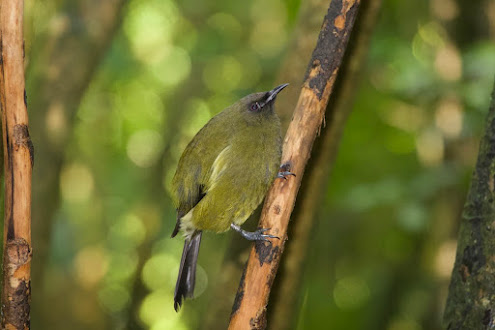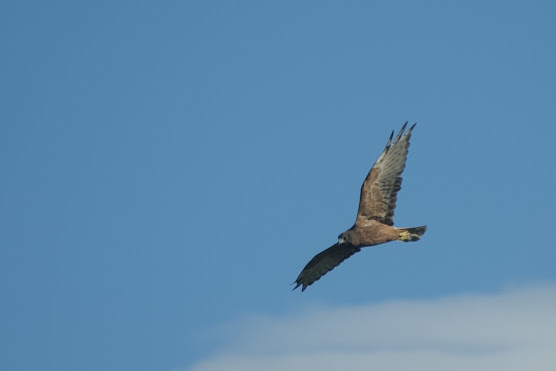Me and my family had planned a trip to New Zealand covering Auckland, Canterbury and Otago. I planned a few hotspots where we could hopefully get a few endemic birds.
Day 1 - Auckland
After arriving in Auckland Airport on the 4th of April, the first bird that I got after we got out of the airport was a Song Thrush and Silver Gull. By the time we got to out hotel, Park Hyatt Auckland, it was dark and it had started raining.
There wasn't much to do at Auckland, so we had planned a full day to Tirititi Mantangi to see some animals and birds.
Tiritiri Mantangi Island is a "environemental rehab centre", as technically the birds can fly off to the mainland, though most of the speices which occur there prefer to stay there. Over at Tiritiri, we had the chance of seeing many New Zealand endemics which is very hard or impossible on the mainland.
We started from Viaduct Harbour, and on our way out to Tiritiri, we would stop at Gulf Harbour to pick up any other visitors. On our way to Gulf Harbour, we saw no birds, instead we got a seal sleeping on a buoy.
Leopard Seal
As we were nearing Gulf Harbour, things really picked up, with White fronted Terns, Australasian Gannet and Variable Oystercatcher. After leaving Gulf Harbour, I saw hundreds of Buller's and Fluttering Shearwaters off the far port side of the ship, but they were too far for good photos.
Variable Oystercatcher
When we got Tiritiri, it was fairly late, and we still had to be briefed by the Rangers on how to respect and explore this environmental sanctuary. After the briefing finished, we spilt up into a few groups and was guided around the island by a few volunteers. My guide was John, and he was absolutely amazing at finding birds and pointing them out for me and the group. Once we started our trek up the slope, we first got a very friendly and confiding North Island Robin which came too close for a photo!
As we walked, John explained to us that we were approaching the territory of a pair of kokakos, and soon John heard them call. Soon after, they hopped out on the trees by the road and the entire group got great views of it. The North Island Kokako is easiest seen in Tiritiri, as they are nearly extinct on the mainland.
North Island Kokako - pair
Next, we headed over to the feeders, where we got many different birds feeding on the honey, including New Zealand Bellbird, Stitchbird, and Tui.
We continued on in the trails, where we got other endemic birds, like North Island Saddleback, New Zealand Fantail, Red crowned Parakeet and a few more North Island Robins.
North Island Saddleback
North Island Robin
We soon arrived at the Tiritiri Lighthouse, where the tour ended and we were free to roam around the island for the rest of the afternoon. Just before leaving us, John told us that there was a feeding of three South Island Takahes at 1PM, where we would be pretty much guaranteed to see it. Soon after, we headed over to the house by the lighthouse and we got great view of a pair of Takahes and a immature one. The South Island Takahe was originally thought to be extinct, until it was discovered by Geoffrey Orbell, in 1948 in the Muchison Mountains, 50 years after it was thought to be extinct. Since then, conservationists have worked hard to keep their population going, and their work has paid off with an increase of breeding pairs now.
After the feeding, we decided to head over to some table to have some lunch. There was no food for sale on Tiritiri, so you had to buy and bring your own food. After a sandwich, I headed back out to find some other birds. Outside, I got a Whitehead, a North Island Saddleback and even a Kokako feeding on the ground!
North Island Kokako
After that, we decided to slowly head back to the docks, as there was only one ship which departs the island per day. On our way down, we got great views of New Zealand Pigeons, Welcome Swallows, a Spotless Crake and more Bellbirds!
New Zealand Pigeon
New Zealand Bellbird
Other than the birds, Tiritiri is also famous for a large insect named the Giant Weta, the largest bug in the world. They are primarily nocturnal, though I was lucky enough to see one resting on one of the tree trunks on the way down.
Once on the ship, I got way closer views of Fluttering Shearwaters along with a Gray Noddy, Little Pied Cormorant and many White fronted Terns.
White Fronted Tern
As we left our stop at Gulf Harbour an towards Viaduct Harbour, we got a few new birds including Caspian Tern, South Island Oystercatcher, Pied Stilt and Australasian Gannet.
Pied Stilt and Masked Lapwing
After we arrived at Viaduct Harbour, we headed straight to a dinner at the Auckland Sky Tower for the views. After our dinner, it was already around 8PM, but I wanted to try for a Red breasted Dotterel within walking distance of our hotel, though the only bird that I got was a White faced Heron.
Day 3 - Auckland to Darfield
We woke up early for our flight from Auckland to Christchurch. The flight was pretty uneventful with only views of Christchurch upon landing.
View of Christchurch from plane
After landing and renting a car, me and my family headed to the Avon River to do some punting. The Avon River was surprisingly birdy, with a few species of waterfowls such as Canadian Geese, New Zealand Scaup, Paradise Shelduck and Mallard.
New Zealand Scaup
Paradise Shelduck - female
Mallard
After the punting, we took a walk in the nearby Christchurch Botanic Gardens, which was a pretty pleasant walk. Some birds that I saw was Muscovy Duck, New Zealand Fantail, Silvereye, Little Pied Cormorant and Eurasian Blackbird.
Muscovy Duck
It was already late afternoon after the walk, and as we were not staying in Christchurch for the night, we had to drive over to Darfield to spend the night. After buying some food in the grocery store, we arrived at Darfield Motel. After dinner we slept early to prepare for an early start the next day.
Day 4 - Darfield to Mt. Cook
My parents had booked a hot air ballon trip in the fields around Darfield, and we were lucky enough to have great weather on our day of our flight. The sights were really beautiful, and I even got some birds, one of the highlights was the Ring Necked Pheasant.
View from ballon
Ring-necked Pheasant
After the balloning, we started the long four hour drive towards Mt. Cook. There isn't much to write about on the drive, except that I got a few new birds including tons Swamp Harriers and a flock of Royal Spoonbills.
As our hotel was above Lake Pukaki, we had to pass the lake before heading up to our hotel. For any bird lovers, Lake Pukaki is famous for the world's largest concentration of Black Stilts I tried to look for it on the way, even though it was pouring. We stopped at a lookout overlooking the braided river ecosystems in which the Black Stilt thrives in, and I managed to find it in the heavy rain. Black Stilts is the most rare species of stilts in the world, with the most recent count of 169 wild adults as of 2020, though the lowest count was 23 adult birds in 1981!
After arriving at our hotel, we were absolutely exhausted after the full day to travel, and so we decided to call it a day and head to sleep.
To be continued.......





















































A fruitful & successful trip, you saw some seabirds, and even the rare species of black stilt in the heavy rain, well done!
ReplyDeleteGood NZ trip, enjoyable and fruitful I think.
ReplyDeleteThank you for sharing your bird's watching and detail description of your journey. Proud of you.
ReplyDelete